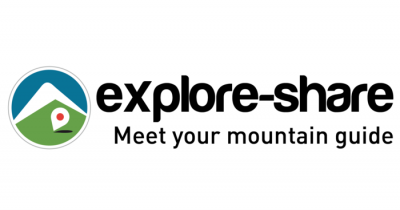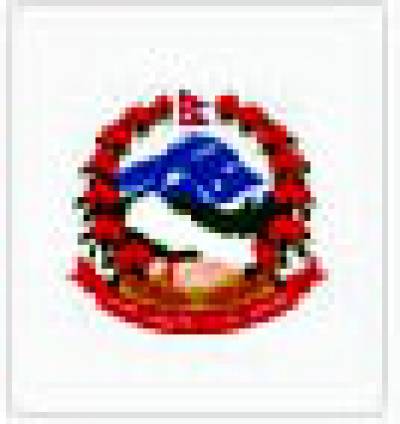MERA PEAK CLIMBING 8 DAYS
At 6,476 meters, it is one of the most popular trekking peaks in Nepal, offering a panorama of the world’s highest mountains from its summit, on a clear day. This 8-day itinerary is a shorter, quicker, and all-around more memorable option for getting to the top, and can give you the epic back-country mountain views and a proper alpine climbing experience.
The trip commences with a picturesque flight from Kathmandu to Lukla; then a breathtaking helicopter ride into the remote Hinku Valley, landing in Kothe. This is a time-saving shortcut that also cuts the long climb, and people can now spend more time adapting and climbing. The route reveals itself gently through lush forests to rough glacial landscapes, providing grandstand vistas and a true sense of adventure.
Once in the higher reaches, climbers will acclimate at strategic points such as Thagnak and Khare. These days of rest, in addition to giving the body more time to acclimate to the high altitude, allow time to take in the peaceful surroundings and mentally prepare and put on the final touches for the summit. The summit push starts from High Camp, where climbers spend the night in tents under the stars, so they can get an early start.
Summit of Mera Peak The summit of Mera Peak is a truly beautiful spot, giving the panoramic views of five of the world’s six highest mountains: Everest, Lhotse, Makalu, Cho Oyu, and Kangchenjunga. It’s a surreal instant that somehow becomes embedded forever in the memories of climbers, heightened by the serenity of the snow-covered wilderness around.
Trek down to Khare and Kothe and then a helicopter flight back to Lukla before hopping in a short flight back to Kathmandu. Mera Peak Climb 8 days presents an opportunity for mountaineers who want to experience high-altitude trekking and climbing in a compact duration without compromising on safety and experience.
With expert instruction and some stunning scenery, plus a little alpine challenge, this trip is the ultimate Himalayan escape.
ITINERARY
Day 1 : Fly from Kathmandu to Lukla (2,800m) & Helicopter to Kothe (3,580m) – Duration: Approx. 2 Hours.
Your Himalayan journey begins with a scenic flight from Kathmandu to Lukla, followed by a thrilling helicopter ride to Kothe. Flying over lush valleys and remote terrain, you’ll reach Kothe (3,580m) in the Hinku Valley without the need for long treks. Settle in at a local teahouse and enjoy your first night in the mountains.
Day 2 : Trek from Kothe to Thangnak (4,350m) – Duration: 4–5 Hours.
Trek alongside the Hinku River through dense forests and alpine pastures, gradually ascending to the charming village of Thangnak (4,326m). Surrounded by towering cliffs and glacial scenery, this tranquil stop offers a great opportunity to adjust to the increasing altitude.
Day 3 : Acclimatization Day at Thangnak.
Spend the day resting and acclimatizing. Short hikes to nearby ridges or glacier viewpoints help with altitude adjustment while offering panoramic Himalayan vistas. Hydration and rest are essential for the days ahead.
Day 4 : Trek from Thangnak to Khare (5,045m)– Duration: 3 Hours.
A shorter trekking day takes you across rocky terrain and glacial moraines as you climb steadily to Khare (5,000m), the base camp of Mera Peak. You'll get your first full view of the mountain and begin final summit preparations.
Day 5 : Acclimatization Day at Khare.
Use this rest day to adjust to the higher altitude. Your guide may offer a short training session on using mountaineering gear like crampons, ropes, and ice axes. Prepare mentally and physically for your upcoming climb.
Day 6 : Trek to Mera High Camp (5,700m) – Duration: 4–6 Hours.
Trek across the glacier using proper gear as you ascend to Mera High Camp (5,700m). The path offers spectacular mountain views and increasingly rugged terrain. Sleep in tents under the stars and rest well before the summit day.
Day 7 : Summit Mera Peak (6476m) & Return to Khare – Duration: 8–9 Hours.
Start your climb early, aiming to reach the summit of Mera Peak (6,476m) by sunrise. The final stretch involves snow slopes and possibly fixed ropes. From the top, enjoy breathtaking views of Everest, Makalu, and other 8,000m giants. Descend back to Khare for the night.
Day 8 : Trek to Kothe, Helicopter to Lukla & Flight to Kathmandu – Duration: 6–7 Hours.
Trek down to Kothe in the morning, then board a helicopter for the return flight to Lukla. After a brief stop, take a short plane ride back to Kathmandu, marking the end of your unforgettable Mera Peak adventure.
SERVICES
Costs Included in Your Package
- Domestic Airport Pick-Up and Drop-Off: Private car or jeep transfer from/to the airport for your convenience and comfort.
- Meals During the Trek: Three nutritious meals per day (breakfast, lunch, and dinner), including fresh fruit served each evening after dinner.
- Scenic Helicopter Transfer: Shared helicopter flight from Lukla to Kothe -Lukla, offering a spectacular aerial view of the Himalayas.
- Accommodation: Comfortable trekking lodge (tea house) stays during the trek, and tented camp accommodation during the Mera Peak climbing session.
- Permits and Entry Fees: All necessary paperwork, including the Makalu National Park Entry Permit fees.
- Flights and Transfers: Round-trip domestic flights (Kathmandu–Lukla–Kathmandu via Ramechhap) with private airport transfers and applicable airport taxes.
- Experienced Trekking and Climbing Guide: An English-speaking, government-licensed guide who is friendly, knowledgeable, well-trained, and fully insured—covering all his expenses, including salary, food, accommodation, transport, and insurance.
- Mera Peak Climbing Permit: Official permit for climbing Mera Peak.
- Sherpa Porters: Reliable, helpful Sherpa porters (one for every two trekkers) equipped with proper safety and walking gear. Their salary, meals, accommodation, and insurance are covered.
- Medical Support: A Comprehensive first aid kit is available throughout the trek for your safety and peace of mind.
- Emergency Helicopter Arrangement: Coordination of emergency helicopter evacuation (covered by your personal travel insurance, if required).
- Essential Trekking Gear (On Loan): Complimentary use of sleeping bag, down jacket, duffel bag, and walking poles (to be returned after the trek).
- Exclusive Souvenirs: Sherpa Expedition & Trekking T-shirt and a trip achievement certificate upon successful trip completion.
- Health Monitoring: Daily use of an oxygen meter to monitor your pulse, oxygen saturation, and heart rate—crucial for detecting early signs of Altitude Mountain Sickness (AMS).
- Assistant Guide: An additional assistant guide will be provided for groups of 8 or more trekkers to ensure safety and personalized attention.
- Government Fees and Taxes: All government taxes and official expenses are included.
Costs Excluded from Your Package
- Meals in Kathmandu: Lunch and dinner while staying in Kathmandu are not included.
- Hotel Accommodation in Kathmandu: Accommodation in Kathmandu before or after the trek is not covered.
- Nepal Entry Visa: The Nepal visa fee is not included. Visas are available on arrival at Tribhuvan International Airport:
- $30 USD for 15 days
- $50 USD for 30 days
- $125 USD for 90 days
- Travel & Medical Insurance: Personal travel and medical insurance (mandatory for trekking and climbing).
- International Airfare: Flights to and from Nepal are not included.
- Personal Expenses: Any personal spending such as souvenirs, laundry, and snacks.
- Drinks & Snacks During the Trek: Alcoholic and non-alcoholic beverages (including tea, coffee, soup, hot chocolate, cocoa, bottled water), as well as any extra food items purchased along the way or at tea houses (e.g., additional meals, snacks, desserts like chocolate, cake, pudding, etc.).
- Extras at Tea Houses: Charges for hot showers, Wi-Fi, and battery charging at trekking lodges are not included.
- Tips: Gratuities for guides, porters, and drivers (tipping is customary and appreciated).
- Excess Baggage Fees: Extra baggage over 10 kg on the Lukla flight may incur additional fees.
- Early Return from Trek: In case of an early return due to illness or any unforeseen reason, the cost of unused services (flights, accommodations, meals, etc.) is non-refundable. Any additional expenses in Kathmandu (hotel, meals, etc.) will be your responsibility.
EQUIPMENTS
You’ll carry your personal gear and share some group equipment, so pack light with layered, weather-appropriate clothing—avoid cotton and choose breathable, insulating fabrics. A windproof duffle (provided and carried by porters) and water are included. Non-trekking items can be stored in Kathmandu. Sherpa Expedition & Trekking supplies all essential expedition gear.
Upper Body:
- Base Layers: Moisture-wicking and quick-drying shirts and thermal tops.
- Insulation Layers: Fleece or down jackets to provide warmth.
- Waterproof Shell Jacket: A durable and breathable jacket to protect against wind and rain.
- Softshell Jacket: A lightweight and water-resistant jacket for added protection.
- Climbing Harness: A comfortable harness to secure yourself to the rope.
- Helmet: A strong and well-fitting helmet to protect your head from falling objects.
- Gloves: A combination of lightweight liner gloves and insulated gloves or mittens for warmth and dexterity.
- Buff or Neck Gaiter: To protect your neck and face from cold and wind.
- Sunglasses: Polarized and UV-protected sunglasses to shield your eyes from the sun and snow glare.
- Goggles: Ski or mountaineering goggles for added eye protection in extreme weather conditions.
Lower Body:
- Base Layers: Moisture-wicking and quick-drying thermal bottoms.
- Insulation Layers: Fleece or insulated pants for added warmth.
- Waterproof Shell Pants: Durable and breathable pants to protect against wind, rain, and snow.
- Softshell Pants: Lightweight and water-resistant pants for added protection.
- Mountaineering Boots: Sturdy and insulated boots designed for snow and ice.
- Crampons: Attachable spikes that provide traction on icy terrain.
- Gaiters: Waterproof and breathable gaiters to keep snow out of your boots.
- Socks: A combination of moisture-wicking liner socks and thick, warm mountaineering socks.
Other Essential Items:
- Backpack: A spacious and sturdy backpack to carry your climbing gear and personal belongings.
- Sleeping Bag: A warm and lightweight sleeping bag that can withstand sub-zero temperatures.
- Trekking Poles: Adjustable trekking poles for added stability and support.
- Headlamp: Essential for climbing in low-light or dark conditions.
- Water Bottles: Insulated water bottles to keep your water from freezing.
- Sunscreen: High SPF sunscreen to protect your skin from the strong sun at high altitudes.
- First Aid Kit: A comprehensive first aid kit with essential medications and supplies.
- Climbing Snacks: Energy bars, nuts, and other lightweight snacks for quick fuel during the climb.
It is important to invest in high-quality gear and ensure that everything fits properly and is in good condition. Additionally, consult with experienced climbers or a professional guide to ensure you have all the necessary gear and receive proper training on how to use it effectively and safely.
Note: Essential climbing equipment, including an ice axe, crampons, climbing boots, harness, helmet, safety rope, ascender (jumar), and carabiner, can be hired in Khare. The total cost is approximately USD 120 per person for a complete set.
GOOD TO KNOW
⛰️ Altitude Acclimatization is Essential
Climbing Mera Peak involves reaching elevations above 6,000 meters, where altitude sickness becomes a real risk. The itinerary includes two acclimatization days—at Thagnak and Khare—to help your body adjust gradually. Even if you’re fit, altitude can affect anyone, so rest days and proper hydration are key to a safe and successful summit.
🧗 Basic Mountaineering Skills Help
While Mera Peak is considered a non-technical trekking peak, some basic mountaineering knowledge is helpful. Using crampons, ice axes, and walking on a rope team may be required near the summit. If you're unfamiliar with this gear, don't worry—your guide will provide a briefing and training at Khare before the climb.
🚁 Helicopter Transfers Save Time
This 8-day plan uses helicopter transfers from Lukla to Kothe and back, cutting out several days of trekking. This not only makes the trip more time-efficient but also allows more energy to be reserved for the actual ascent. It’s a great way to experience the remote beauty of the Hinku Valley without an extended expedition.
🥶 Be Prepared for Cold Conditions
Temperatures at High Camp and the summit can drop well below freezing, especially during early morning summit attempts. Layered clothing, a high-quality down jacket, gloves, and a four-season sleeping bag are essential. Don’t underestimate the cold—even in peak climbing season.
🛂 Permits Are Required
Climbing Mera Peak requires several permits: the Mera Peak Climbing Permit, the Makalu Barun National Park Entry Permit, and a TIMS (Trekkers’ Information Management System) card. If you’re going with an organized tour or guide company, these are usually arranged on your behalf.
🧳 Pack Light but Smart
Since this is a short-duration expedition with helicopter access, pack only essential gear. Focus on technical clothing, personal items, and medications. Most trekking agencies will provide climbing equipment like ropes, harnesses, and tents, but check in advance to avoid duplication.
MAP
PHOTOS/Videos
Departures
Select a departure month
Fill out the form below and a Travel Expert will reach out to create your perfect tour.
FAQS
How difficult is Mera Peak climbing?
Mera Peak is considered a trekking peak, meaning it doesn't require advanced mountaineering skills. However, the altitude and glacier terrain make it physically demanding. Basic fitness and mental preparedness are essential.
When is the best time to climb Mera Peak?
The best seasons are spring (March to May) and autumn (September to November). These months offer stable weather, clear skies, and better visibility for summit views.
Do I need prior climbing experience?
No technical experience is mandatory, but some high-altitude trekking or basic mountaineering training helps. Guides will provide safety briefings and basic gear training before the climb.
How do we handle altitude sickness?
The itinerary includes rest days for acclimatization, and guides monitor climbers for symptoms. Drinking plenty of water, ascending slowly, and taking altitude medication if needed are part of the prevention strategy.
Why use helicopters in this itinerary?
Helicopters are used to save time and reduce physical strain. Flying to Kothe and returning from Kothe to Lukla allows for a focused climbing experience while skipping longer trekking sections.
What should I pack for this trip?
Essential gear includes warm clothing, base layers, a down jacket, gloves, mountaineering boots, sunglasses, sunscreen, a sleeping bag, and personal medications. Climbing equipment is usually provided by your outfitter.
What permits are required?
You’ll need a Mera Peak climbing permit, Makalu Barun National Park permit, and a TIMS card. These are typically handled by your trekking agency.
What kind of food and accommodation is available?
Teahouses provide basic but hearty meals like dal bhat, pasta, soup, and rice dishes. Tented camps are used at High Camp. Meals are included in most climbing packages.
How many people are in a typical group?
Groups usually range from 2 to 10 climbers, led by experienced guides and supported by porters. Smaller groups allow for better attention and flexibility.
Is travel insurance necessary?
Yes, mandatory. Insurance should cover high-altitude trekking, emergency evacuation by helicopter, and medical expenses. Always verify your policy includes altitudes up to 6,500 meters.
Latest Traveller’s Reviews
Travel experiences of our clients who recently returned from their trips.
100%
Based On 896 Reviews
Reena Kuhrram
United States
September 17, 2024
Wonderful Experience from Start to Finish
I had a wonderful experience trekking to Everest Base Camp with Sherpa Expedition and Teams. The level of professionalism and care was evident from the start. Our guides were excellent at facilitating our acclimatization and ensuring everyone was in good spirits. The breathtaking landscapes and the warm hospitality in the teahouses made the trek unforgettable. I felt a true sense of camaraderie with fellow trekkers, all thanks to the fantastic atmosphere the Sherpa team created.
Daniella Garcia
Austria
September 2, 2024
Unforgettable Journey
My trek to Everest Base Camp with Sherpa Expedition Teams was nothing short of magical. The guides were incredibly knowledgeable and attentive, ensuring our safety and comfort throughout the journey. The breathtaking views, especially of Khumbu Glacier, left me in awe. Every meal was delicious, and the teahouses were cozy. I felt genuinely supported every step of the way. I highly recommend Sherpa Expedition for anyone seeking an adventure of a lifetime!
Laurence Fang
United States
August 29, 2024
Epic Adventure!
Trekking with Sherpa Expedition and Teams was an epic adventure. Their expertise in organizing the trek was apparent, and our guide was a wealth of knowledge. The trek itself was challenging yet thrilling, with stunning views that took my breath away. I felt safe and supported throughout, and the local culture added an enriching layer to the experience. Reaching Everest Base Camp was a dream realized. I wholeheartedly recommend this team for anyone looking for an incredible trek!
People Considering This Package Right Now Check availability
























